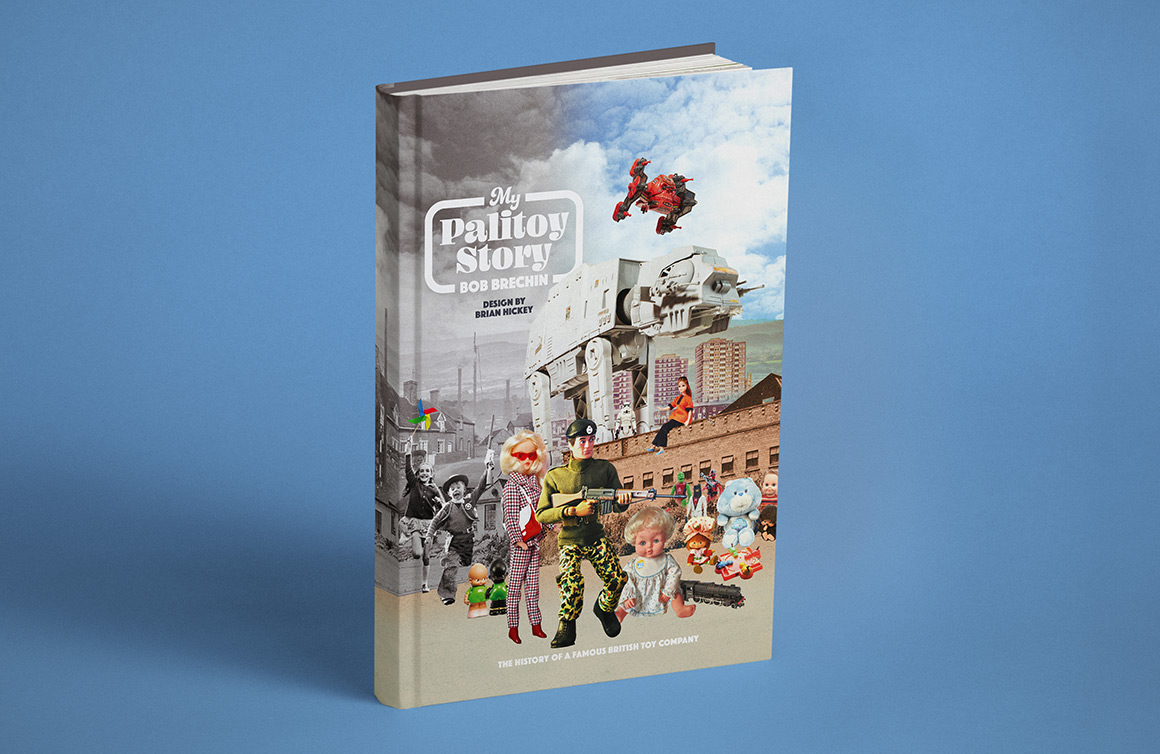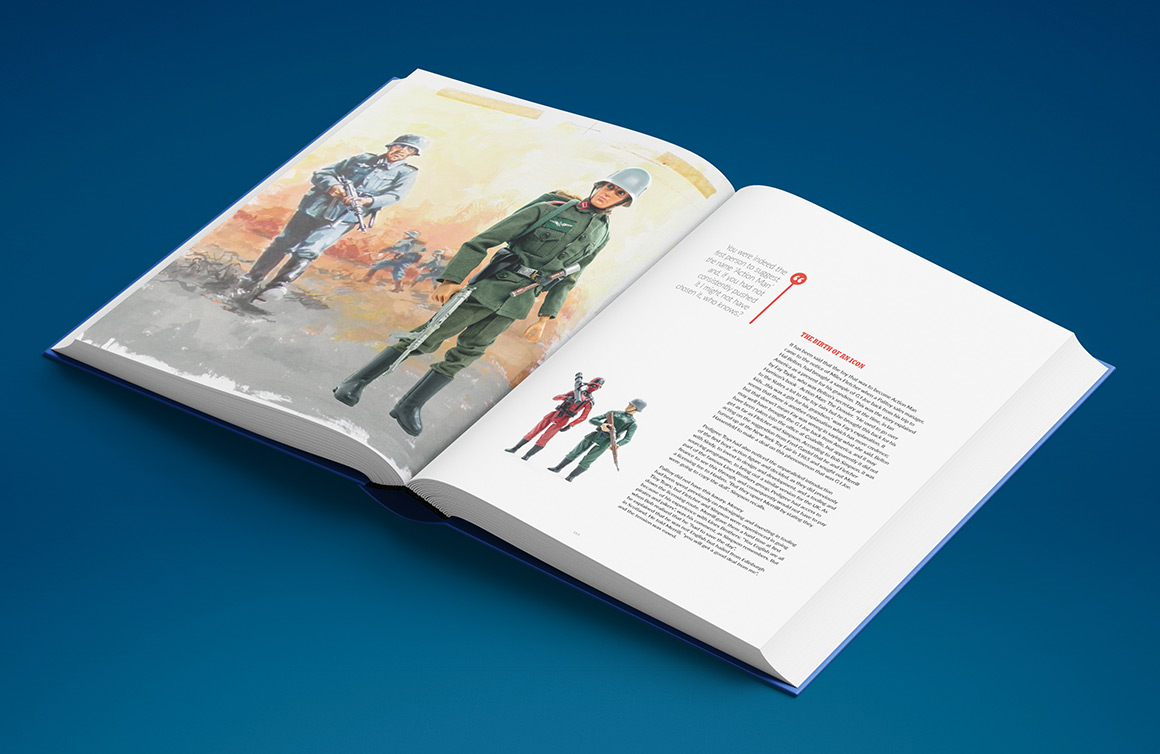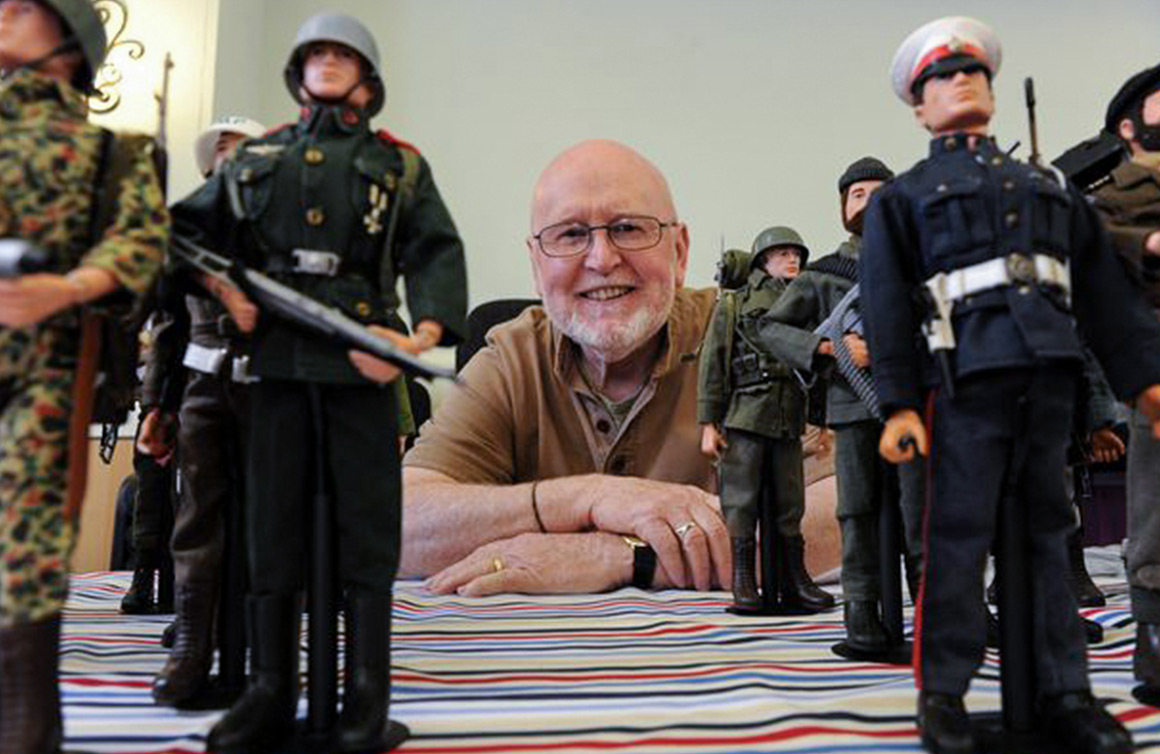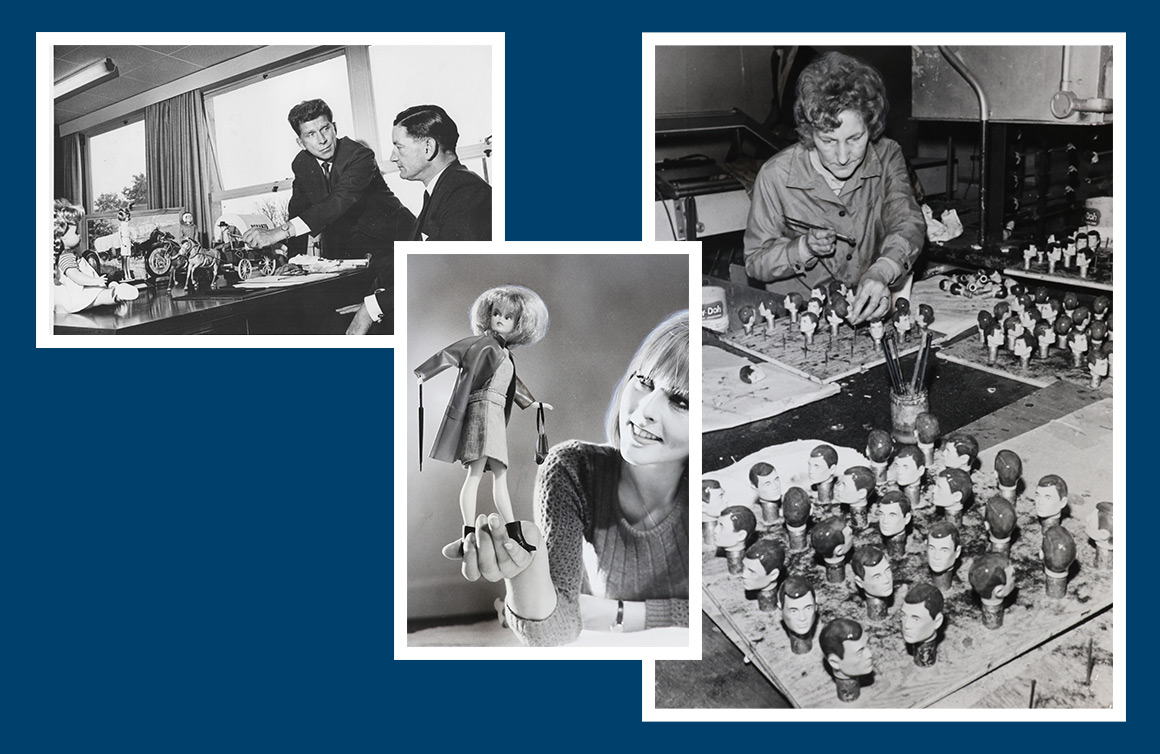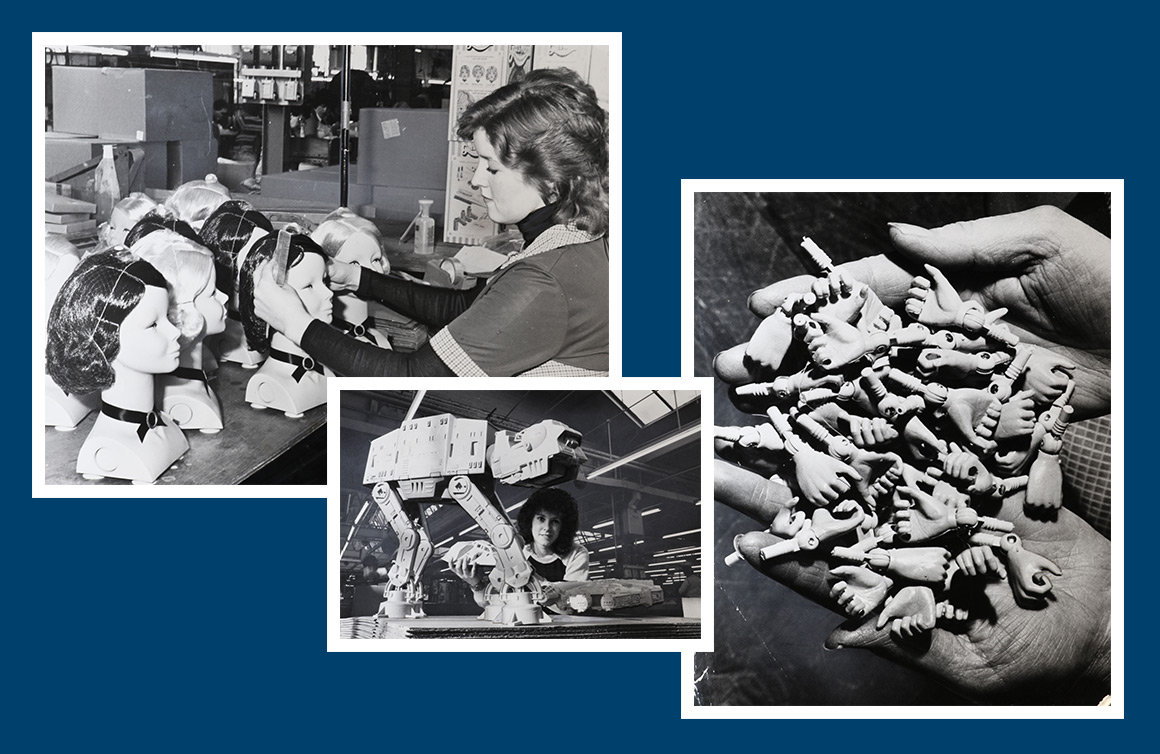For those who are unfamiliar with the company, tell us about Palitoy.
Palitoy is famous as a British toy company that produced toys in the 1960s, ’70s, and ’80s.
Alfred Pallette was the founder of Cascelloid Company in 1919. The name Palitoy is a derivative of his surname. In the 1920s, Cascelloid was producing a lot of toy products alongside industrial plastic products, and registered a trademark for the name Palitoy Playthings, which they would use to market their toys. Palitoy as an actual company didn’t adopt that name until it was sold to General Mills in the 1960s.
As Palitoy, the company produced a lot of the big brands, such as Star Wars and Action Man on the boys’ toys side of things. I suppose many of your readers will be familiar with Star Wars. Action Man is the 12-inch version of G.I. Joe that Palitoy licensed and rebranded as Action Man. He came with different uniforms — British military rather than the American military that G.I. Joe started out with.
On the girls’ toys side of things, Palitoy was a renowned manufacturer of dolls. They made dolls as early as the 1920s when they were known as Cascelloid Company and continued through the 1980s.
The book looks at the connection between Palitoy and Kenner, both of which were acquired by General Mills at different stages. It explores the Star Wars toys, which were a huge success story for Palitoy in the United Kingdom. It established a model for global toy marketing and distribution that would ultimately unravel the company. It’s a weird irony; it spelled the beginning of the end. That’s fully explored in the book.
The book delves to levels of depth that I didn’t even know existed.

My Palitoy Story: The History of a Famous British Toy Company is a collaboration between you and Bob Brechin. What are your connections to the company and what inspired you to publish this retrospective?
Bob was the chief designer in Palitoy’s design department. The majority of his professional career was spent there. He joined as a product designer fresh out of college in 1967 and worked right through until they wound down the design department in 1984.
Bob worked across a lot of different toys — action figures, dolls, train sets, cars, board games — he was a very versatile toy designer and worked across many different brands.
I met Bob as a toy collector way back in 2014 when I visited a convention where he was a guest. I met him very briefly and we kept in communication on social media. Bob is very good at keeping contact with collectors and fans through social media.
I was writing my own book about a Palitoy brand called Action Force and I reached out to Bob to see if I could interview him for the book. He said yes. During our discussion of Action Force and the history of Palitoy, he let me know he was working on his own projects. This was in 2020. I suggested very casually that if he ever wanted to partner with a graphic designer, that I would be honoured to work with him to bring his book to life.
Bob got back in touch with me in 2022 to asked if I remembered that conversation and if I was still interested in being a designer for his book project. We started corresponding regularly on how we might collaborate to make the book happen. He had written a first draft at that stage — 90,000 words — and he let me read it. It was a fantastic read and very insightful. I learned that Palitoy was a company that wasn’t just popular in the 1960s, ’70s, and ’80s, but that its roots go right back to the First World War and the very birth of the toy industry.
It was fascinating to read about how an industrial plastics company in 1919 began to develop to produce various toys and how they had that branched out and grew to acquire other toy companies and then themselves were acquired by British Xylonite. The toy division of Cascelloid was then sold to General Mills in the 1960s. Bob joined the company shortly thereafter.
After I’d read that first draft, I knew that this was a project that I really wanted to work on. As a designer, I could visualize this as an illustrated history because there’s so much material in his story that lends itself to being represented visually through photography, whether it’s social political photography — because politics and the social way of life had a huge impact on the development of the toy industry — or the toys themselves being represented visually, as opposed to just being described in words.
Bob and I embarked on a process of trying to source lots of images of the different toys that we could use within the book. Some of those images come from stock libraries, some come from private collectors who have their own images, and then some of them are images that I’m contributing as a photographer and designer on the project.
We have a wealth of imagery to illustrate Bob’s wonderful written content.

Take us through the layout of the book. What will people see on the pages?
The book begins at the end and describes the winding down of the company. It then flashes back to the birth of the company in 1919 and proceeds chronologically to where the book begins — with Palitoy ceasing to exist and the legacy it left behind.
There will be imagery of the early toys that the company produced, such as plastic windmills and little plastic cars. Then the book moves into the the later 20th century where there is a lot more visual material to draw from — toys like Star Wars, Tressy, and Tiny Tears.
Bob has the entire collection of Palitoy trade catalogs dating back to the 1950s when the company existed as Cascelloid, through to the 1980s. They’re a great visual reference. Vectis Auctions — a British toy auctioneer — has very generously agreed to let us use images from their library.
That means that we have access to images of almost every toy that was produced by Palitoy, which is pretty amazing.

Why do you think Palitoy toys continue to be popular with collectors?
I think it’s a combination of things.
There are two sides of Palitoy’s design and production process. On the one hand, they designed their own toys, for which they fully owned the intellectual property. Separately, they would license toys from other companies around the globe then modify, change, or enhance those toys to make them somehow different from the original license. Between those two design approaches, they created something very unique.
If it was an existing toy, such as G.I. Joe, Palitoy brought their own unique spin to it. What you could get in America during the heyday of G.I. Joe in the 1960s and 1970s was different than the variants that Palitoy was producing. In some cases, they were radically different.
For its own bespoke toys, Palitoy had a superb design team in house. Bob was only one of many talented designers working within the team. They produced some iconic toys. One good example is the Robo Skull — it was a spaceship with a skull-shaped cockpit. It was a zany, crazy idea that was beautifully executed. That toy is really sought after among collectors today.
Another contributing factor is the fact that their distribution wasn’t global, it was primarily the United Kingdom and Ireland with some small distribution in Europe. The quantities produced were small, which can make those toys rare now.
In doing research for this book, I noticed that Palitoy made unique outfits for its dolls. They had a brilliant design team, designing outfits for the for the various dolls and action figures. Those outfits are bespoke to Palitoy. Even collectors in the United States are hunting down Palitoy-specific outfits for Tressy and Pippa dolls.
Palitoy’s design legacy is a big factor in why their toys are so popular with collectors.

The Kickstarter campaign to support the book concludes on Sunday, June 18. Where are you in the publishing process? Where can people buy the book once the crowdfunding campaign is complete?
At the moment, the only way to make sure you get a copy of the book will be to back the Kickstarter campaign.
The book is currently with the editor, so the text component will be done in the coming weeks. We’ve sourced hundreds of images to illustrate the book. We have a bank of image content from libraries and personal collections. I am contributing photos from my own archive, as well.
People can see sample pages on Kickstarter. We expect to ship to our backers in April 2024.

Learn more about My Palitoy Story: The History of a Famous British Toy Company on Kickstarter.


